Camping baths: features, types and do-it-yourself making
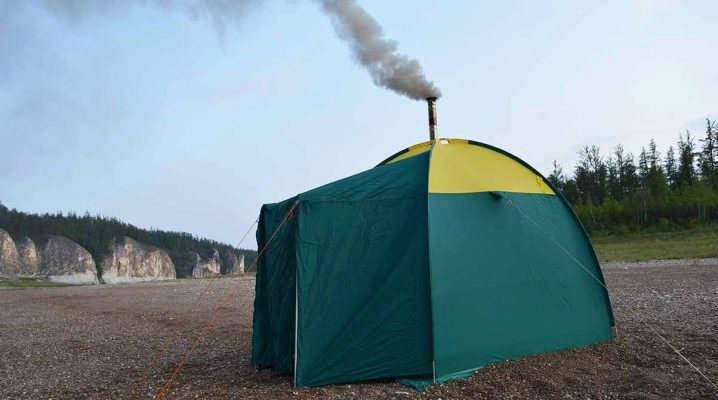
Bath - a room in which they wash and also steam, heating the air to high temperatures for this. The characteristics of a particular type of baths differ depending on the cultural and national characteristics of the area in which they are equipped.
There are camping variations of baths, distinguished by their compactness and versatility. Depending on the situation, ready-made hiking models, as well as home-made modifications, can be used.

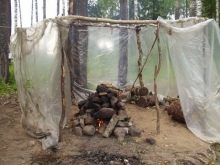
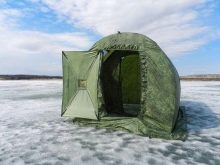
What is it and what are they for?
A camping bath is a portable tent with a stove. The tourist modification of such a bath is a complete structure, which, if desired, can be laid down to a compact size, which makes it extremely mobile when transported over long distances.
The finished portable bath is equipped with a device that can act as a stove and allows you to heat its interior.
The furnace of such a bath differs from the traditional model. Its design provides for the presence of space used for laying stones. The stones laid in a special lattice groove are heated by heat transfer from the main body of the furnace.
Mandatory attributes of a camping sauna stove are a chimney pipe, a valve or a door that closes the firebox, and special legs that prevent heat transfer to the tent floor.
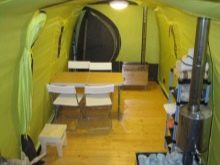
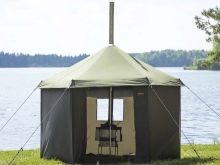
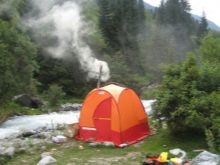
The store version of a camping bath within a particular model configuration provides for the following components.
- Metal carcass, the configuration of which is determined by the characteristics of a particular model.
- Covering fabric sewn in the form of a frame. It is made from non-combustible or non-combustible materials, such as cotton thread impregnated with a fire-resistant water-repellent solution.
- Forgery - a special fabric that repeats the shape of the frame, separating the inner space from the outer fabric (provided for by the configuration of specific models of bath tents).
- Various fasteners: cords, wedges and others.
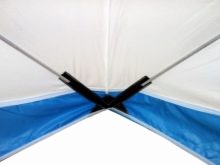
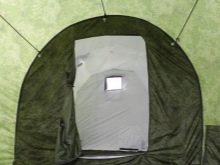
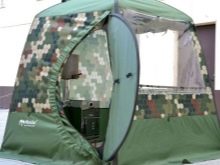
The market for tourist accessories offers a wide range of models of camping baths, which differ in a number of individual characteristics. Their main difference from each other is the capacity parameters, which are determined by the amount of usable internal space.
The structure and functionality of field baths are identical to those of their stationary counterparts. Their main distinguishing feature is the ability to use improvised materials collected in the area where the tourist camp is located.
Do-it-yourself field bath construction requires only the purchase of a sufficient amount of plastic film with the appropriate density, and fastening materials: adhesive tape, rope, wire, and some others.


The indisputable advantage of a homemade camping bath is the ability to use improvised materials, most of which are available in sufficient quantities in any household. DThis fact causes a significant reduction in the cost of construction.
However, in comparison with store-bought options, homemade counterparts have a number of disadvantages. Among them, one can single out the need for manual procurement of material for assembling the frame, which can be complicated by the characteristics of a particular area (lack of vegetation, its unsuitability, and other factors). Besides, assembling a homemade bath-tent will take a lot of time allotted for rest.

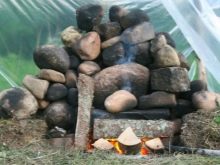
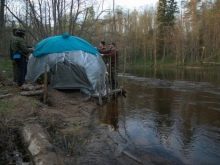
The main purpose of mobile baths is to provide an opportunity to wash and steam in the field. They are indispensable during long-distance tourist crossings and long stops in the wilderness. With proper use, a camping bath makes it possible to carry out warming, tonic and even medical procedures.
The impact of heated air and hot steam has a positive effect on the physical and psychological state of a person, which is very important during his stay in field conditions. A visit to a portable bath leads to relaxation of the muscles of the body, relieves fatigue, and has a positive effect on the respiratory and cardiovascular systems.
While staying inside the field bath, it is allowed to use field and forest plants and branches with medicinal properties, for example, coniferous paws or birch twigs. They are soaked in hot water, they cover the floor inside the bath or hold over the steam rising from hot stones.
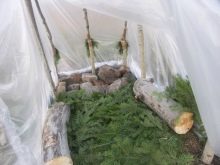
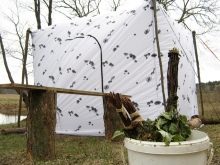
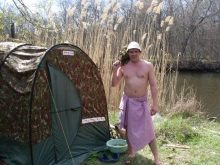
Popular Models
Recently, a positive opinion has been formed among users of hiking baths regarding some of their manufacturers.
Nova Tour
Bath-tents produced by this company are distinguished by their simplicity of design, compactness and functionality. Their distinctive feature is the possibility of operation without the use of a factory frame.
To assemble the supporting frame of such a bath, you can use improvised materials - wooden poles made from tree branches growing within the tourist camp. The presence of this possibility provides a reduction in the total weight of the cargo carried by tourists by hand, and saves free space in the cargo compartment of the transport.
The camping sauna from Nova Tour is equipped with a special combustion compartment, the fabric walls of which are protected by non-flammable material. The stove itself is not provided with the tents of this series.
During its operation, you can use a third-party stove or equip an improvised firebox with stones.

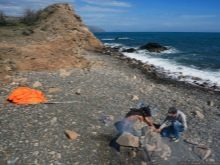
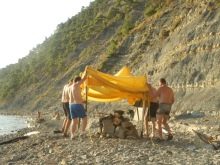
"Mobiba"
The company specializes in the production and sale of shawls, camping baths and other tourist equipment. The range of sauna tents offered by it is extremely wide.
On the shelves of tourist shops you can find folding, knapsack and universal modifications of Mobiba baths, equipped with stove equipment and without it, with one or more windows, single-layer, double-layer; in the form of a cube triangle and half-cylinder, as well as winter or summer options. Besides, The variety of the range is complemented by many different colors.
Bath and tent products of this company meet high standards of safety and functionality.The technologies by which these bath-tents are produced allow them to serve for a long time and without interruption.
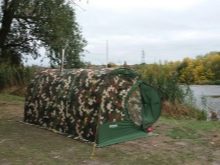

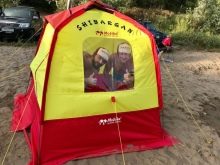
Less popular, but no less functional camping baths are models manufactured under the brands "Walrus" and "Coast". They are distinguished by reasonable prices and decent quality.
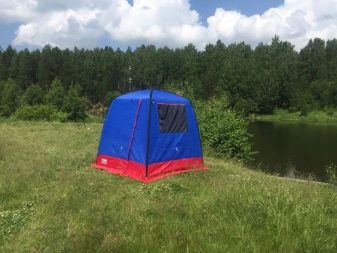
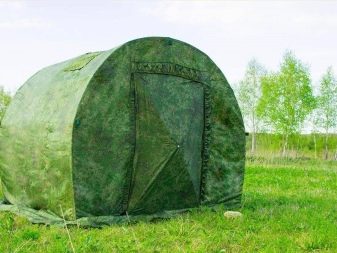
How to choose a ready-made option?
To choose a bath for tourism, it is necessary to take into account several determining factors. The parameters of the purchased bath must meet the requirements of capacity, safety and functionality.
Each mini-bath is made with the calculation of the amount of free internal space intended for its use by a certain number of people at the same time. Knowing this will help determine its capacity.
In addition to the free space intended for people, the camping bath is equipped with a technological compartment. A stove, a container for stones, a woodshed are installed in its perimeter, and the necessary bath accessories are also located.


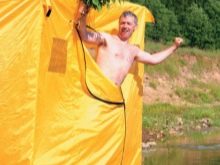
When purchasing a finished bath it is important to pay enough attention to the safety standards that it meets. The presence inside the camping bath of a source of increased danger - a red-hot stove or hot stones, suggests the occurrence of a fire hazard.
Given this fact, it is necessary to find out the composition and properties of the materials from which the canvas is made, covering the technological compartment of the tent. It is considered mandatory to have devices that provide fire protection.
The functionality of a camping bath of a particular model determines the degree of comfort of its use. The presence of additional devices - seats, opening windows, special flooring, shelves, hangers and others, is welcome.


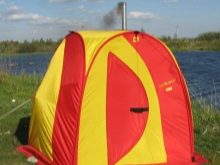
Of great importance is the technology of assembling the frame and installing a folding bath. The easier this process will be, the more comfortable the outdoor recreation will be.
The material from which the metal frame of the tent is made, if any, must have a sufficient margin of safety. Anodized coating of metal components is considered an advantage.
In some cases, the choice may be determined by the color of the surface of the tent canvas. For example, for hunters, a forest-style color is suitable, and for ordinary tourists - in bright and catchy colors.

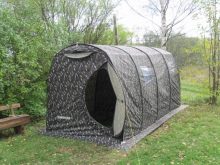

How to make your own?
Preparation for hand-made assembly of the sauna tent begins before the trip. It is necessary to calculate its size and the amount of materials that will be used.
The dimensions of the tent are calculated taking into account the number of people who will use it at the same time. In most cases, the optimal size involves 2-3 places inside. With more of them, you will need more materials for manufacturing, time and resources for arranging and warming up.
Based on the data on the number of people, a drawing of the future bath-tent is drawn up. It should indicate the dimensional parameters of individual parts of the structure and the total value of its dimensions. The prepared drawing is placed in a package that can prevent it from getting wet, and is taken with you on a hike.

The bulk of the construction materials are mined on the spot - in the field, however, some of them must be prepared before going on a hike.
The cover sheet is made from polyethylene. To harvest this material in a hardware store, a piece of dense film is purchased, the length of which will be sufficient to cover the prefabricated frame. This takes into account the fact that store film is sold folded in half. At the place of the tourist parking, it can be deployed, which will make it possible to cover twice as much area.
Mounting materials are being prepared. They can be tape, twine, wire and others. They fasten the individual parts of the frame. The preference for these fasteners is due to their low cost and ease of installation.
To assemble a field bath with your own hands, you will need a minimum set of tools - an ax, a knife, a mini-hacksaw, a sapper shovel and others.

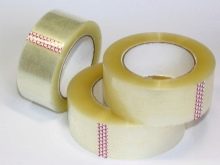

Immediately before assembly, wood poles are prepared. They can be cut from long, relatively straight branches. The length of the poles should exceed the height of the future structure by 0.25-0.5 m. This is necessary in order to compensate for the lack of height that may occur after driving the poles into the ground. The optimal height of the finished product is 1.5 m. Exceeding this value will lead to an increase in the internal space, therefore, to an increase in the duration of the heating period and the cost of a larger amount of covering polyethylene.
Four 2 m poles are driven into the ground to a depth of 0.5 m, forming a quadrangle. Their tops are connected to each other by other poles using adhesive tape, wire or rope (in this case, adhesive tape is preferable, since it can be used to soften the sharpness of the corners of the pole connections). The result should be a cube or parallelepiped, the faces of which are wooden sticks.
To equip the technological compartment, in which the heated stones will be located, two additional poles are attached to one of the sides of the frame.
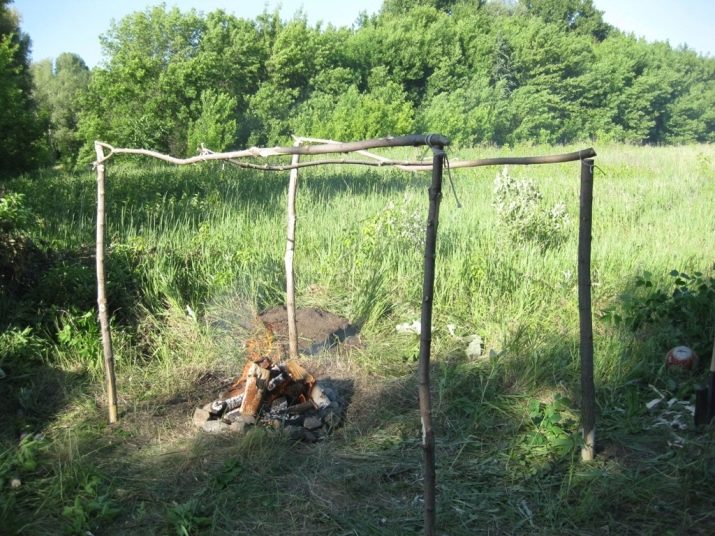
On one side they are connected to the corner vertices of a cube or parallelepiped, and on the other side they rest against the ground. This achieves the effect of expanding the bath, providing free space for laying stones. This space is separated from the main perimeter of the inner area, which contributes to the comfort and safety of operation.
The frame is covered with foil. It is important to be careful when doing this, as rupture of the polyethylene can lead to significant heat loss.
The edges of the film, which lie on the ground around the frame, are pressed down with stones or a felled tree trunk, cleared of knots and sharp branches. Other parts of the film coating are fixed with clothespins or clerical clips. This will reduce heat leakage and prevent damage to the integrity of the skin in the presence of wind, rain or other external factors.
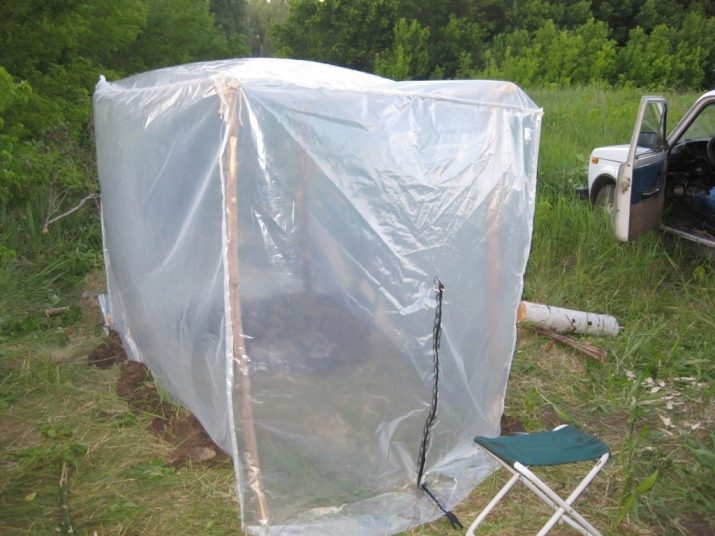
To provide additional convenience, a recess is dug in the floor of the technological compartment, into which stones will be placed. Its depth depends on the number of stones. The presence of this recess will provide protection from the effects of heat on the film, as well as reduce heat loss.
The side of the frame, on which the entrance to the bath will be located, is arranged in such a way that it is convenient to open and close the film in this place. To fix it in the closed position, clamping devices are also used.
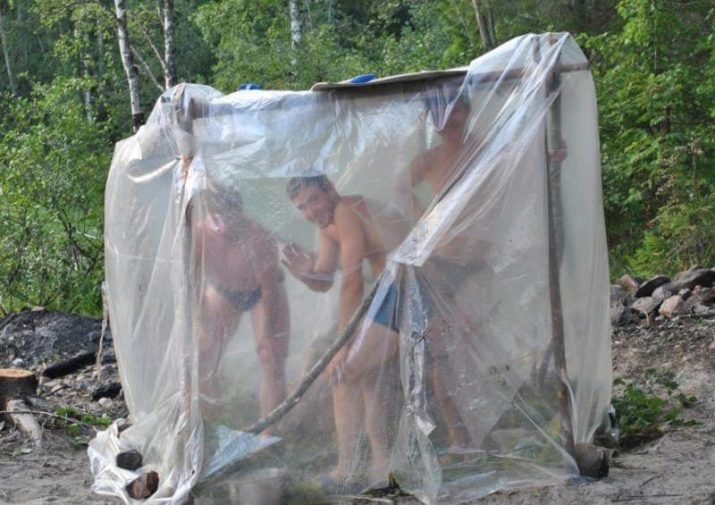
Recommendations for use
To ensure the use of a bath in nature in the best possible way, following some recommendations will help.
It is advisable to install a bath-tent near a reservoir - a lake or a river. The close location of the water will make visiting the bathhouse not only a necessity, but also a useful rest. This fact is explained by the benefits of a contrasting change in temperature affecting the human body.
The body, heated up by hot bath steam, dipped into cold water, undergoes processes of emergency cell restructuring, which has a beneficial effect on the general physical condition and has a tonic effect.
A small distance between the bathhouse and the pond will allow you to avoid the long stay of heated people within the limits of drafts and will greatly simplify the process of visiting the forest steam room. In addition, while inside, it is required to use enough water to create steam and maintain the temperature at the required level.
In winter, the lack of sufficient water is compensated by the presence of snow, which can be thrown on rocks and also used as a cooling medium.


It is recommended to place the bath on a flat surface overgrown with grass. To prevent unpleasant situations, the possibility of sharp stones, branches or twigs getting into the perimeter of the internal space is excluded.
The presence of a herbal layer will provide a softening and massage effect, which will make the rest even more pleasant and useful. To enhance this effect, it is recommended to cover the floor of the bath with branches of coniferous trees, birch or oak. The enzymes contained in their leaves have a relaxing and healing effect on the human body.If there is high bush or grass vegetation in the area where the bath-tent is installed, it should be removed.
When using a home-made bath structure, the stones are heated outside its perimeter. This is due to the fact that it is extremely difficult to install a furnace in a polyethylene casing without the risk of fire or melting. Given this fact, a place for heating stones is arranged at some distance from the steam room.
The stones are heated in the following way: a stone house is surrounded by a large amount of dry firewood. The better their combustion proceeds, the faster the stones will heat up to the desired temperature.
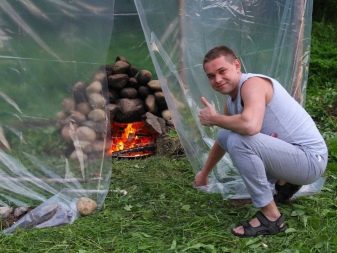

The properties of the rocks must meet safety standards. They should not burst when heated and abruptly cooled. These parameters correspond to river stones. Sandstone is strongly discouraged.
The sizes of individual stones should be medium, since too small ones require a lot of time to move them to the technical compartment of the tent. The use of too large stones is associated with the subsequent difficulty of carrying them in a heated state.
To move hot stones from a fire to a bath, it is worth preparing special devices. They can be a metal bucket, a road or sapper shovel, a wood spear, an impromptu stretcher, or something similar.
During the installation of a homemade bath and its subsequent operation it is important to adhere to generally accepted safety standards. As a precaution, you can prepare and keep nearby a container of water designed to put out an uncontrolled fire or a car fire extinguisher.

Accounting for and compliance with all of the above recommendations will make it possible to make your own camping bath as comfortable as possible.
How to make a camping bath with your own hands, see the following video.




























